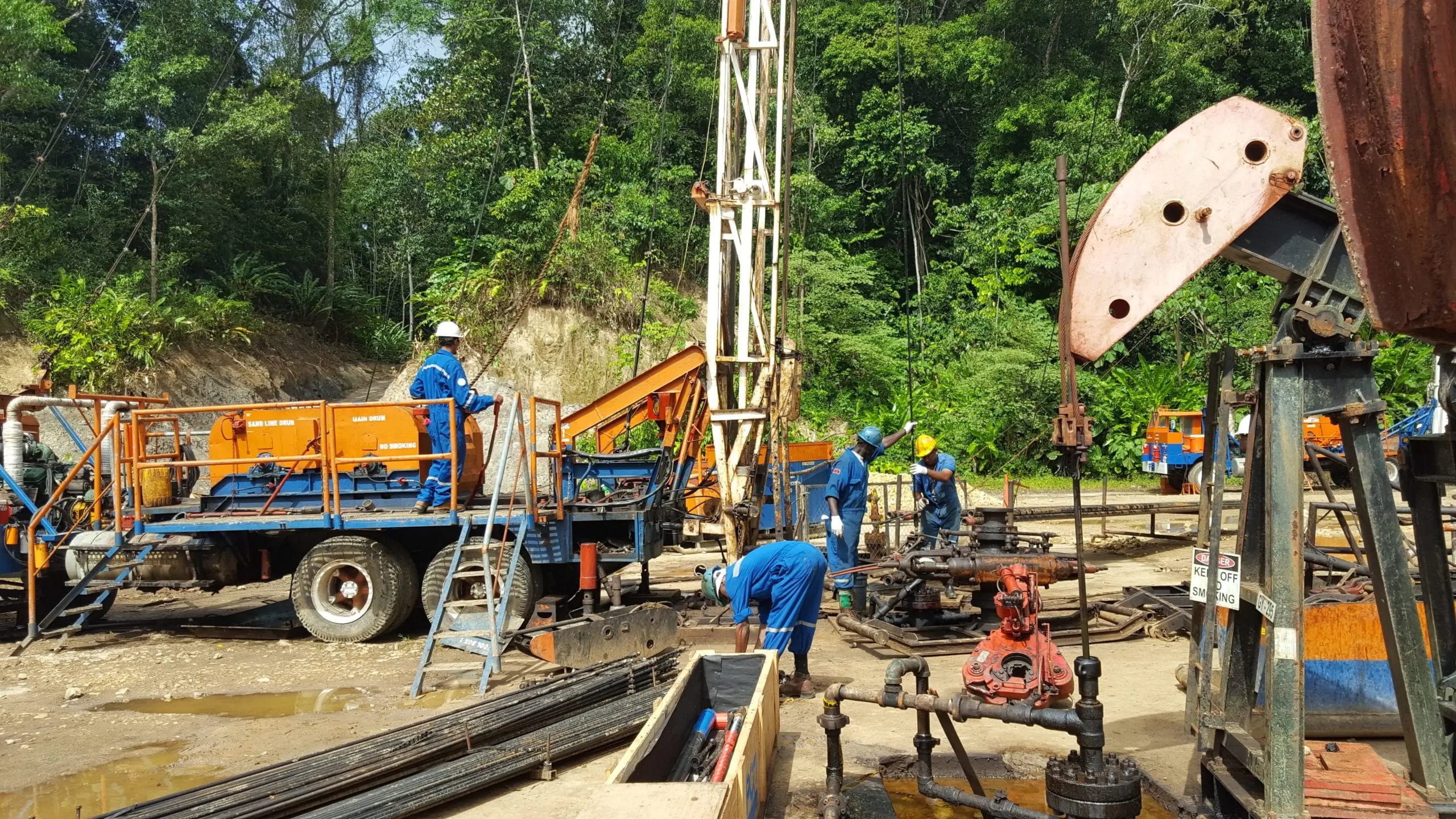Challenger Energy Group plc (LON:CEG) Chief Executive Officer Eytan Uliel caught up with DirectorsTalk for an exclusive interview to discuss the farm-in agreement with Chevron, industry attention in Uruguay, the Area Off 3 licence, and how the Group have secured licenses in the Area surrounded by major international companies.
Q1: First off, congratulations on the recently announced farm-in agreement with Chevron. Could you just talk us through the structure of the deal and the value that it brings to Challenger Energy?
A1: The Group’s primary focus is on two exploration licenses in Uruguay, the first one is Area Off 1, the second one is Area Off 3.
Area Off 1, we’ve had for a little bit longer, we’ve been working doing technical work on it for the last two years, and that technical work was highly useful. It proved up a very large potential resource, it created a body of technical work that we were then able to show to the industry, and as a result of that we’ve secured a farm-in agreement, if I can be so bold as to say, a market-leading farm-in agreement with Chevron, which got announced about a week and a half ago.
So, to your question, the structure of that agreement, Chevron are going to come in as a 60% partner in that block, they’re going to take over operatorship which means that the heavy duty work that needs to follow will now be under their auspices with the full capability of Chevron, one of the world’s largest oil companies behind it.
As an entry payment, we will receive $12.5 million US in cash. In addition, the immediate priority on that block is to undertake 3D seismic, that’s usually quite an expensive, time consuming and technically demanding process. So Chevron are going to pick up 100% of the costs of that including our 40% share up to a cap of $15 million and they’re going to do that seismic on an accelerated basis. So we can expect to hopefully see the seismic campaign kick-off as early as the end of this year, certainly the first part of next year.
Finally, if Chevron then decide that the results of the seismic merit an initial exploration well on the block as we hope and expect that they will, then again, they will carry a good chunk of our costs in that initial expiration well.
So, all in all a really good farm-in package for us at least that will see the block moved forward at pace from here on.
Q2: Why is there so much industry attention on Uruguay at the moment?
A2: Well, if you roll the clock back two or three years, what happened in early 2022 is that there were a couple of really major discoveries made in Namibia, what you might even call mega discoveries. One was made by Total when they drilled something called the Venus well, one was made by Shell when they drilled something called the Graff well.
Ever since then, there’s been an acceleration of work and discovery after discovery after discovery in Namibia. There was one only last week, one of the Galp wells, called Mopane.
But why am I talking about Namibia?
Namibia is the direct conjugate margin of Uruguay so way back 120 million years ago when the earth was one continent and then the African and South American continental plates pulled apart from each other, in between formed a narrow marine channel, that was where the source rock that is producing today’s oil in Namibia was deposited. It’s the exact same source rock that over the millions of years drifted across as the Atlantic opened up and is now present in Uruguay. That can be seismically correlated directly to Namibia. It’s present in Uruguay, present in offshore southern Brazil, and present in the northern parts of offshore Argentina.
So, what happened is as soon as these discoveries were made in Namibia, not only did it prove that there’s oil in Namibia, it also massively de-risked the prospect of there being oil in the waters of Uruguay. That’s what’s driven this massive uptick in industry interest. The industry knows the score, they understand the technical story here and so they see the prospect of Uruguay and those parts of the Atlantic margin becoming a replica of what they’ve seen in Namibia.
People watching this don’t have to take my word for it, you can just look at what’s happened, so in less than two years, 100% of the available licenses in Uruguay have been taken out. They’ve been taken out not by juniors like us, by Shell, by Apache, by a national oil company, YPF, in December, a bunch of licenses in Southern Brazil were taken out by Chevron, by CNOOC, by Petrobras, big, big international companies are piling into the region. There’s a lot of work going on, there’s wells now scheduled, there’s seismic acquisition scheduled so there is a huge amount of industry buzz.
As I say Namibia is undisputably the hottest place on the planet now for frontier offshore exploration and development, and now everyone’s looking across the Atlantic and saying well that is the geological mirror, that could be the next place.
So that’s why we’re seeing all this industry interest.
Q3: Just moving back to changes Area Off 3 block, how does the license compare with Area Off 1?
A3: It’s similar and different. It’s similar in the sense that it’s big, it’s offshore, it’s in relatively shallow waters. It’s slightly different in that it’s a slightly different play concept.
Area Off 3 is adjacent to Area Off 2, as the numbering would suggest, and Area Off Two was taken out by Shell last year, and Shell have some very specific work program obligations and it’s pretty obvious what sort of things they’re looking at. The primary play that we see in that part of the world known as the Amalia prospect, that extends from Shell’s block onto Area Off 3 so we have some hope around that.
Equally, I mentioned earlier that a bunch of blocks were taken out in the Pelotas Basin in the Southern Brazilian territorial waters in December last year, there is a lot of direct geological correlation between those blocks and Area Off 3. So, we see a lot of prospectivity in Off 3, which is different but of equal magnitude to what we saw in Area Off 1.
I guess one of the things that Area Off 3 is potentially even better than Area Off 1 in relation to, is that historically there was a lot of 3D seismic in what is now Area Off 3 so there was none of that in Area Off 1. As I mentioned, a big part of the transaction with Chevron is that we’re going to see accelerated 3D seismic in Area Off 1, there’s no need for that in Off 3 so that’s already been done. What needs to happen there is that legacy 3D seismic needs to be reprocessed, some new technologies and new techniques need to be applied to that data, the most specific being AVO analysis. With all of that, we could almost fast track that block into early drilling, strategically, and what we’re intending to do there is exactly what we did with Off 1. Get the early technical work done, commence a formal farm-out process and bring in a partner but that partnership, unlike Area Off 1, which is focused on 3D seismic first leading to drilling, Area Off 3 we’d be looking at just getting straight into an exploration well.
Q4: So, what are your plans for Area Off 3?
A4: Well, like I said, it’s pretty straightforward. The license actually was literally signed two weeks ago, formally signed, the initial exploration period only kicks off three months later so it’ll be in June. Pretty much immediately, what we’ll be doing is looking to get hold of a license existing 3D seismic data submitted, roughly six month program of technical work reprocessing various other supplementary technical work streams, with a view to coming up with a refined technical understanding of the block by the end of the year.
Early next year, we will kick off a farm-out process, and if the process on Area Off 1 is anything to go by, that could take six months. So, by the middle of next year, we’d be looking to have a really an upgraded technical understanding, a partnership with a large oil company, and that paves the way for exploration well drilling pretty much as soon as we can get to it.
Q5: Speaking of large oil companies, how did Challenger Energy end up securing licenses in the Area surrounded by majors?
A5: It’s a long story for another day but essentially, when the whole world was shut down for COVID, the first licensing round came up in Uruguay, this was in early 2020, nobody else was paying attention, none of the majors were doing anything, as I say, the world was in lockdown mode, we saw the opportunity.
Now to be fair, we didn’t know what was going to happen in Namibia, but we thought, well, if it works out in Namibia, it could be great for Uruguay. There was an opportunity to pick up the Area Off 1 license, pretty much uncontested and on very, very advantageous terms. We had very low minimum work commitments, we had no obligation to drill a well, no 3D obligation, etc so we kind of snuck in under the radar in in early 2020. We waited for two years during COVID for the license to be issued and then to some extent, we got lucky, I guess you could call it, in that the big discoveries were made in Namibia.
In the process, though, we’ve really established ourselves as a credible player in Uruguay, we’ve done a good solid technical work, we’ve built an excellent relationship with the regulator and the ministry, and we’ve brought Chevron to the table. It was in that context then, there was one license left, the Off 3 license, and again, we were able to, if you like, sneak in under the radar and pick that one up.
We’ve emerged really as the only junior player in a pool of majors in what is now one of the really most interesting and hotly sought after frontier offshore exploration spots on the planet.
So, a combination of foresight, ability to act quickly and nimbly, and some luck has put us in this position.





































